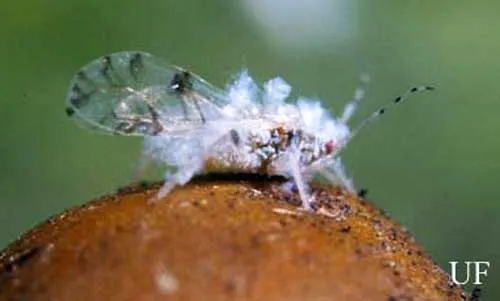Over 400 Species Of Aphids Feed On Numerous Hosts.
Aphids are one of the most common insects found on Gainesville trees and shrubs. There are over 400 species of that feed on numerous hosts. Aphids use theirpeircing and sucking mouthparts to extract sap from the tender, new growth of plants. While aphid feeding does not look good, it usually doesn’t cause serious damage to that kills plants. However, their act of taking the plant's new growth vital nutrients does make them look unappealing. Aphids also excrete a sticky substance called honeydew (a nice name for aphid poo) that can be a nuisance; it gets all over plants,sidewalks, vehicles, and other structures and create a black sooty mold look.
Treatment Strategy
Soil applied systemic insecticides are very effective and work from the inside of the plant to treat the plant-damaging insect. Systemic Ornamental insect controls are applied to the soil at the base of the tree where it is taken up by the root system. A contact insecticide can be sprayed and is very effective as as well, as long as coverage of the foliage is achieved.
how Is It Spread?
• Aphids overwinter as eggs on hosts bark or needles.
• In spring the eggs hatch and aphids migrate into summer hosts.
• Aphids reproduce quickly and can have many generations per year.
• In late summer eggs are laid again.
Susceptible Trees
All tree species can become infested with aphids.
Symptoms
• Curled discolored leaves.
• Plant sap excreted as honeydew making the plant sticky.
• A black fungus called sooty mold may be growing on the honeydew.
• Spots of sap on cars, sidewalks, houses, etc.
Lookalikes
None
Related/Similar Problems
Ants and bees are often found around trees infested with aphids. They are attracted to the sticky sweet honeydew that aphids excrete.
Timing
Spring or Fall
Urgency
Medium
Risk Of Spreading
Moderate


